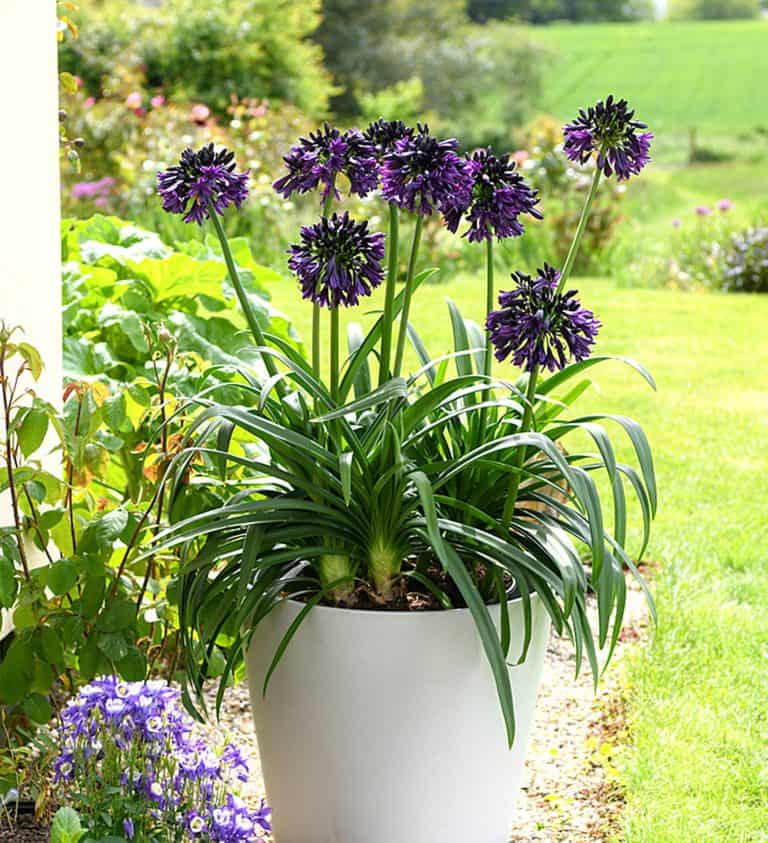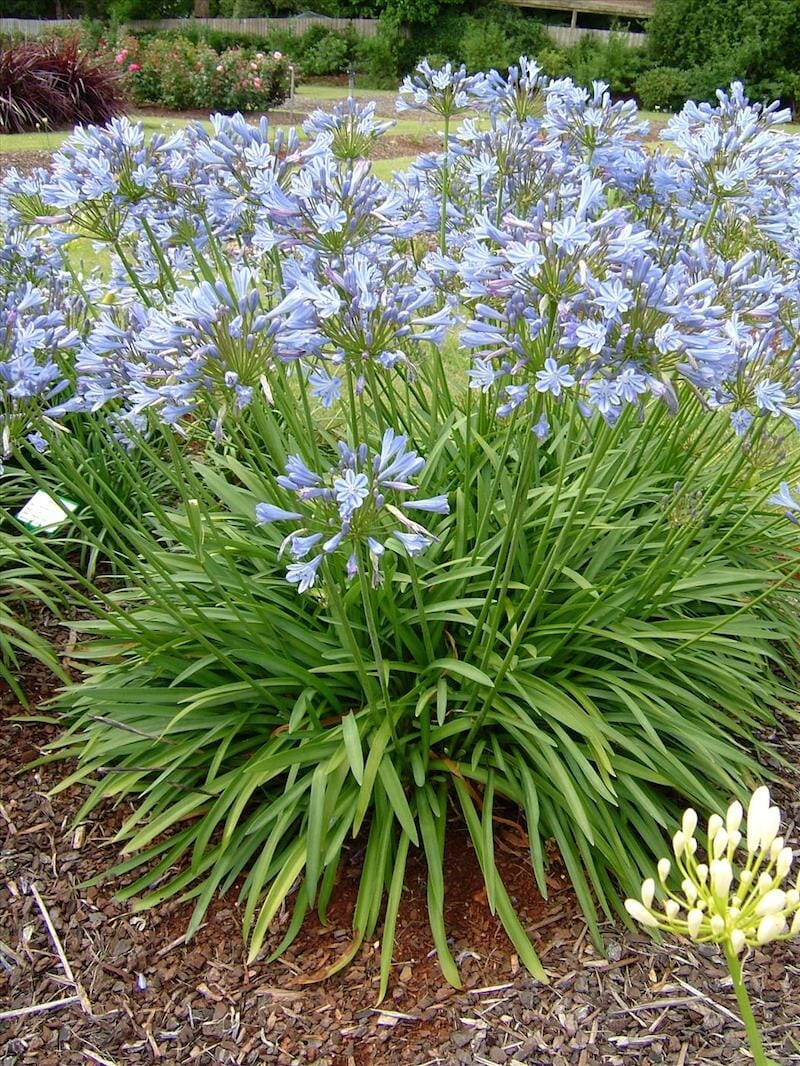Agapanthus Proliferation: Tips for Expanding Your Plant Collection
Agapanthus Proliferation: Tips for Expanding Your Plant Collection
Blog Article
Letting Loose the Secret to Successful Agapanthus Cultivation: Advice for a Flourishing Yard
In the realm of gardening, growing agapanthus effectively needs a calculated technique that includes various elements of plant care. By understanding the nuances of agapanthus growing, one can produce an atmosphere where these plants thrive and grow perfectly.
Growing Agapanthus: Finest Practices
When planting Agapanthus, appropriate soil preparation is important for guaranteeing successful growth and development of these beautiful flowers. Agapanthus, generally referred to as Lily of the Nile or African lily, thrives in well-draining dirt with a slightly acidic to neutral pH level - Agapanthus. Before growing, it is crucial to change heavy clay soils with natural issue such as garden compost or peat moss to improve water drainage and supply crucial nutrients for the plants
To plant Agapanthus, choose a place that obtains full sunlight to partial shade, as this will advertise healthy development and bountiful blooming. Dig a hole twice the size of the plant's origin sphere and place the Agapanthus at the same deepness it was formerly growing. Gently backfill the hole with dirt, pushing down strongly to get rid of any kind of air pockets around the roots.
Water the freshly grown Agapanthus completely and remain to keep the soil equally moist, particularly throughout the plant's active growing season. Agapanthus. Applying a balanced plant food once a month can additionally sustain the plant's development and flowering. By complying with these ideal practices for planting Agapanthus, you can create a spectacular display screen of these fascinating flowers in your yard
Perfect Dirt Conditions for Agapanthus
For optimal growth and growing success of Agapanthus plants, making sure the soil problems are ideal is critical. Agapanthus chooses dirt that is abundant in nutrients, so incorporating a well balanced fertilizer throughout the expanding period can promote healthy and balanced growth and lively blossoms.

Watering and Feeding Tips
To make certain healthy and balanced development and dynamic flowers, appropriate watering and feeding strategies are important for effective Agapanthus growing. Agapanthus plants gain from regular watering, particularly during the growing season. It is recommended to water deeply once a week, ensuring the soil is damp however not soaked. During hot weather or in pots, more constant watering might be necessary to prevent the dirt from drying totally.
When it concerns fertilizing Agapanthus, a balanced plant food with equal parts nitrogen, phosphorus, and potassium can be used in the springtime to promote healthy and balanced development and flowering. Slow-release fertilizers are excellent for giving nutrients slowly over click here to find out more a prolonged duration. Prevent over-fertilizing, as this can result in excessive foliage development at the cost of blossoms.
Furthermore, incorporating natural issue like garden compost into the soil can enhance nutrient degrees and enhance dirt structure, helping in the total health and wellness of the Agapanthus plants. By complying with these watering and feeding ideas, gardeners can guarantee their Agapanthus plants prosper and create spectacular screens of flowers.
Trimming and Deadheading Techniques
Proper pruning and deadheading methods play a critical role in preserving the health and appearances of Agapanthus plants, enhancing the vital techniques of watering and feeding for successful farming. Pruning Agapanthus involves removing invested flower heads, yellowing or dead leaves, and total shaping of the plant to promote far better development. Deadheading, the process of getting rid of discolored flowers, not only boosts the plant's appearance but additionally urges further blooming.
When deadheading Agapanthus, it is recommended to clip off the blossom stem at the base using sharp, clean shears. This process reroutes the plant's power from seed production back into root and foliage development, advertising a much healthier and more durable plant. Normal deadheading can extend the blooming period of Agapanthus and avoid self-seeding, which can cause congestion.
In regards to trimming, Agapanthus normally gain from a light trim after blossoming to clean up the plant and motivate fresh development. Reducing back the spent flower stems and removing any type of dead or broken vegetation helps maintain the plant's vigor and overall appearance. Nonetheless, it is necessary to avoid cutting right into the crown of the plant, as this can weaken its health.

Protecting Agapanthus From Vermins and Diseases
Implementing effective parasite and condition administration methods is vital to guarding the health and vitality of Agapanthus plants in growing. Agapanthus are typically durable plants, yet find out they can still come down with numerous bugs and diseases if not correctly looked after. One usual parasite that influences Agapanthus is the Agapanthus borer, a caterpillar that passages into the plant, triggering damages to the blossoms and fallen leaves. To stop invasions, routine inspection of the plants is crucial. If borers are identified, they can be manually gotten rid of, or insecticidal soap can be utilized as a control measure.
In addition to insects, Agapanthus are prone to illness such as origin rot and fungal leaf places. These concerns can typically be protected against by making sure correct water drainage and avoiding overwatering. If signs of disease appear, affected parts of the plant ought to be without delay eliminated to stop more spread. Fungicides may likewise be used as a therapy measure, following the manufacturer's guidelines meticulously. By remaining vigilant and dealing with parasite and condition concerns quickly, gardeners can assist their Agapanthus prosper and prosper.

Conclusion
In verdict, successful cultivation of agapanthus needs appropriate planting methods, suitable soil problems, sufficient watering and feeding, routine trimming and deadheading, and protection from illness and bugs. By following these ideas and tricks, gardeners can ensure a growing yard full of attractive agapanthus blossoms. Agapanthus. Keep in mind to preserve regular treatment and interest to information to promote the wellness and durability of these sensational plants
When growing Agapanthus, correct dirt prep work is vital for guaranteeing effective development and advancement of these lovely blossoms.Water the freshly grown Agapanthus thoroughly and continue to keep the soil evenly damp, particularly during the plant's active growing season.For optimal growth and growing success of Agapanthus plants, ensuring the soil conditions are suitable is vital. When growing or hair transplanting Agapanthus, guarantee the soil is well-prepared to offer the essential structure for the plants to establish themselves effectively. One typical pest that impacts Agapanthus is the Agapanthus borer, a caterpillar that tunnels into the plant, from this source creating damages to the blossoms and fallen leaves.
Report this page